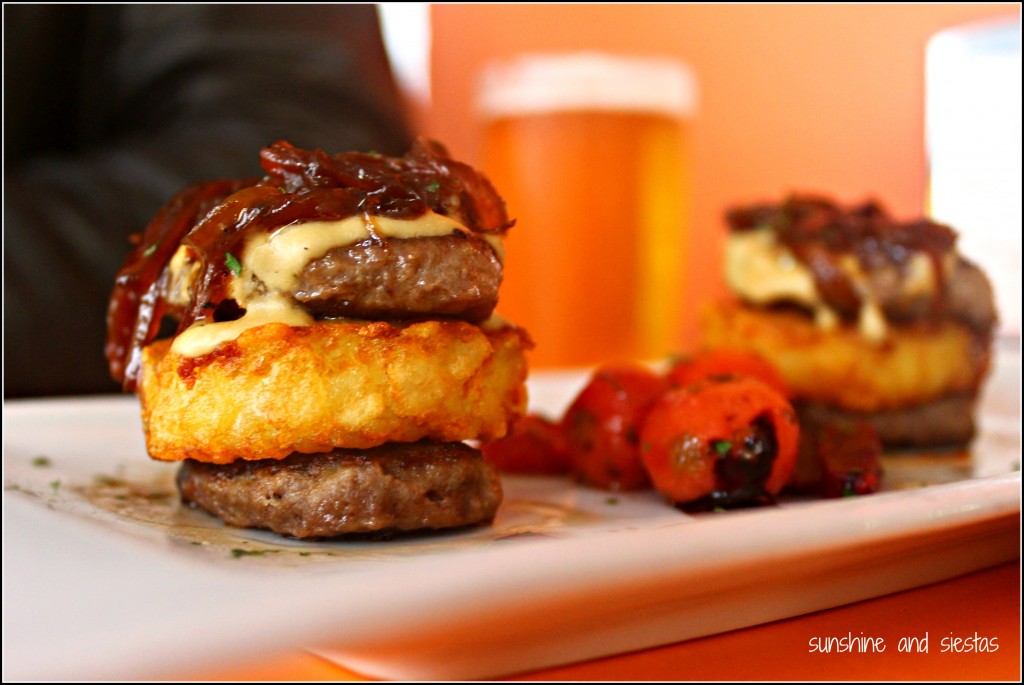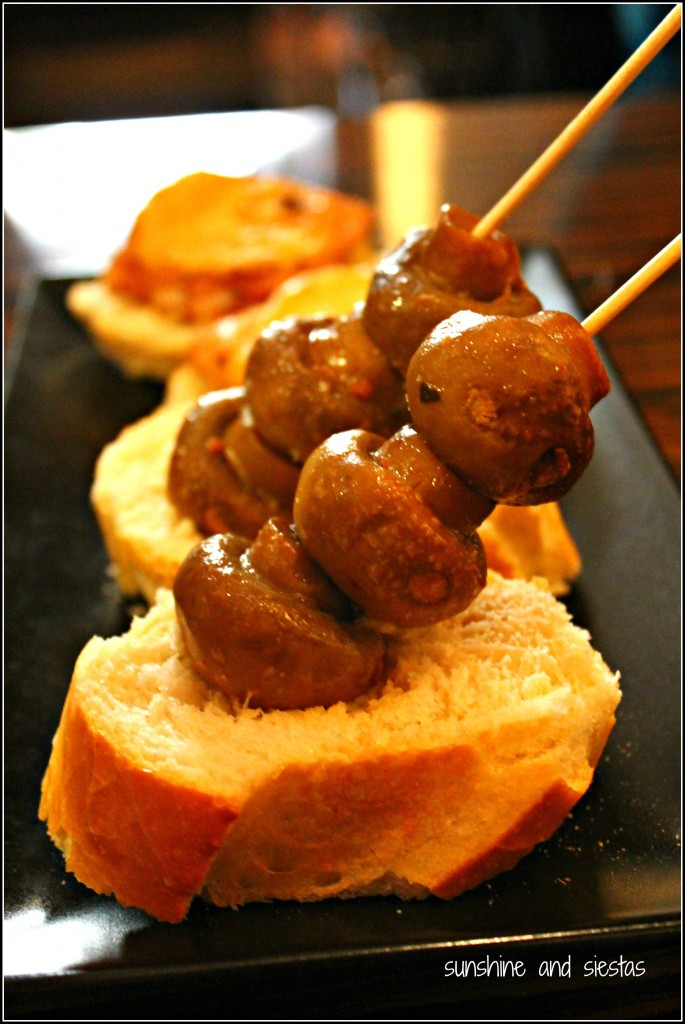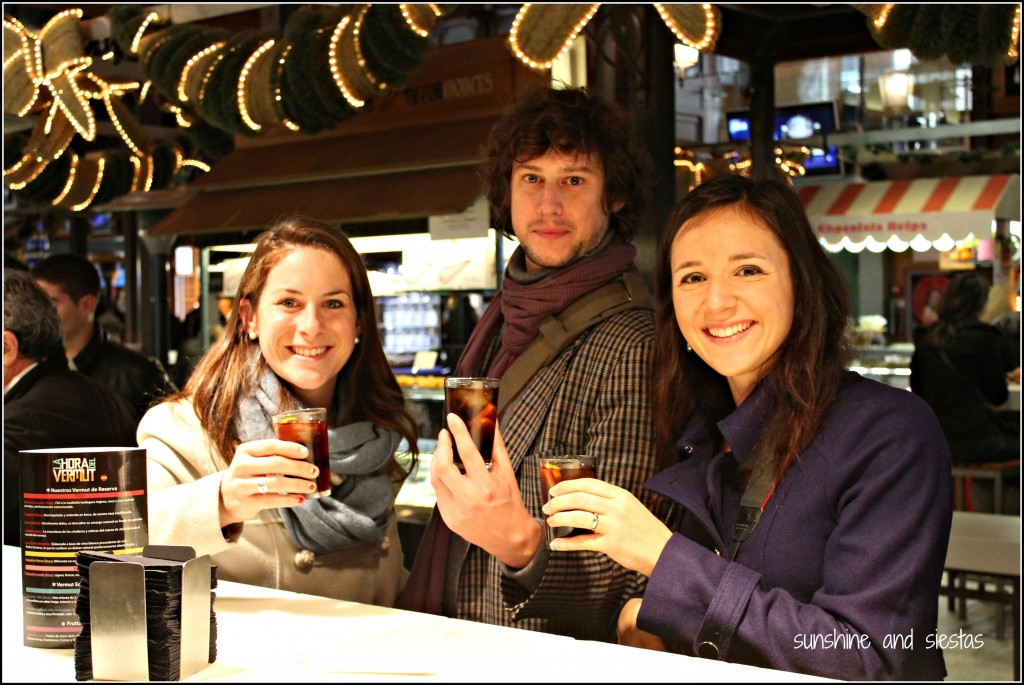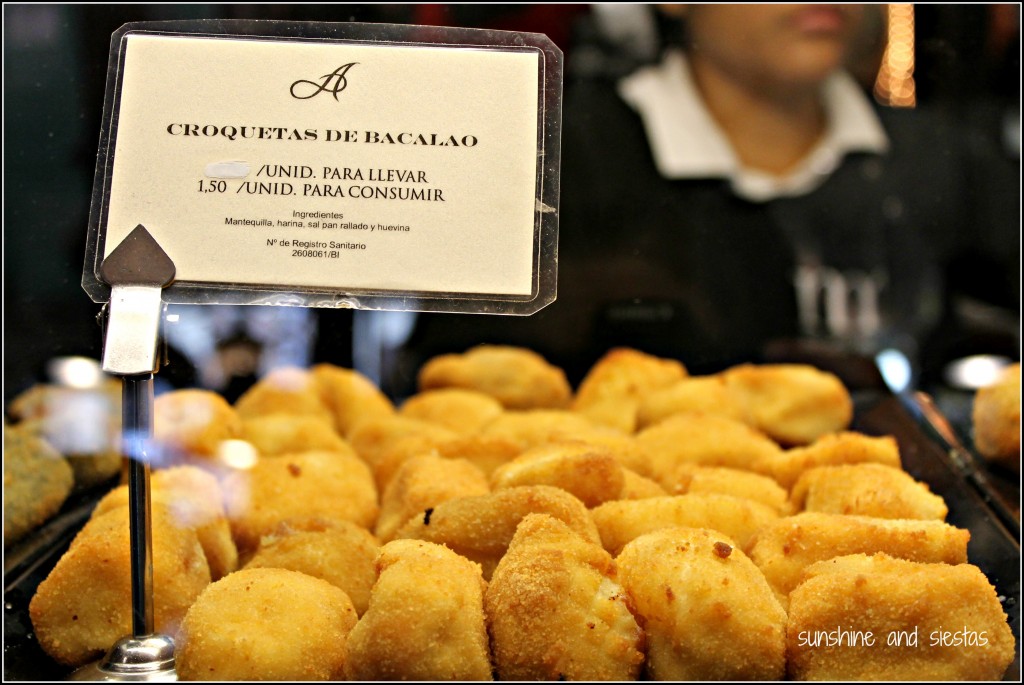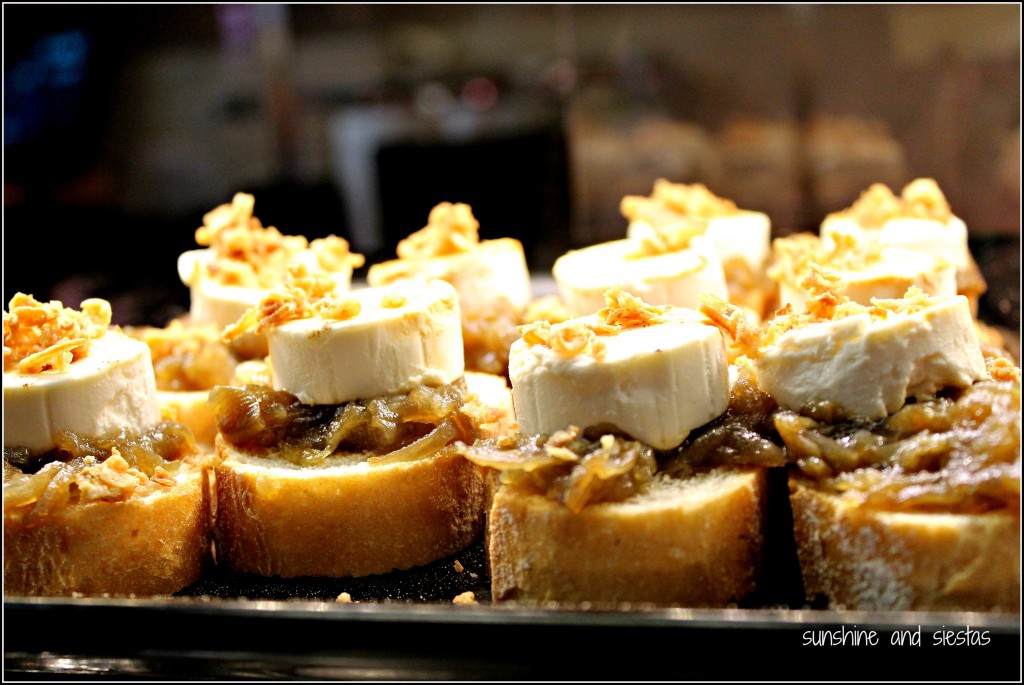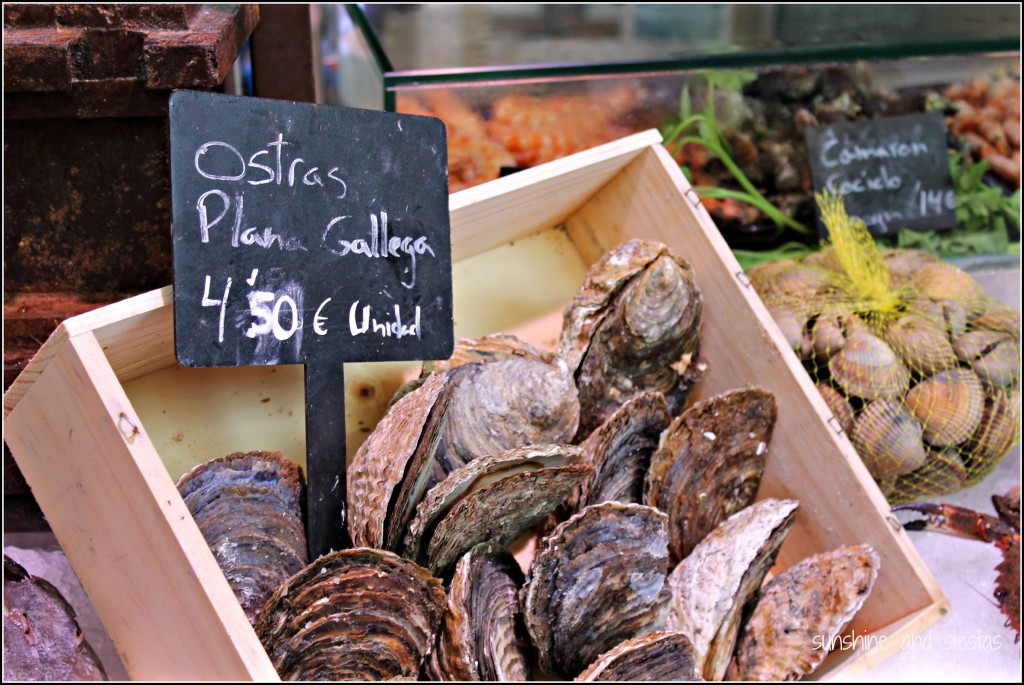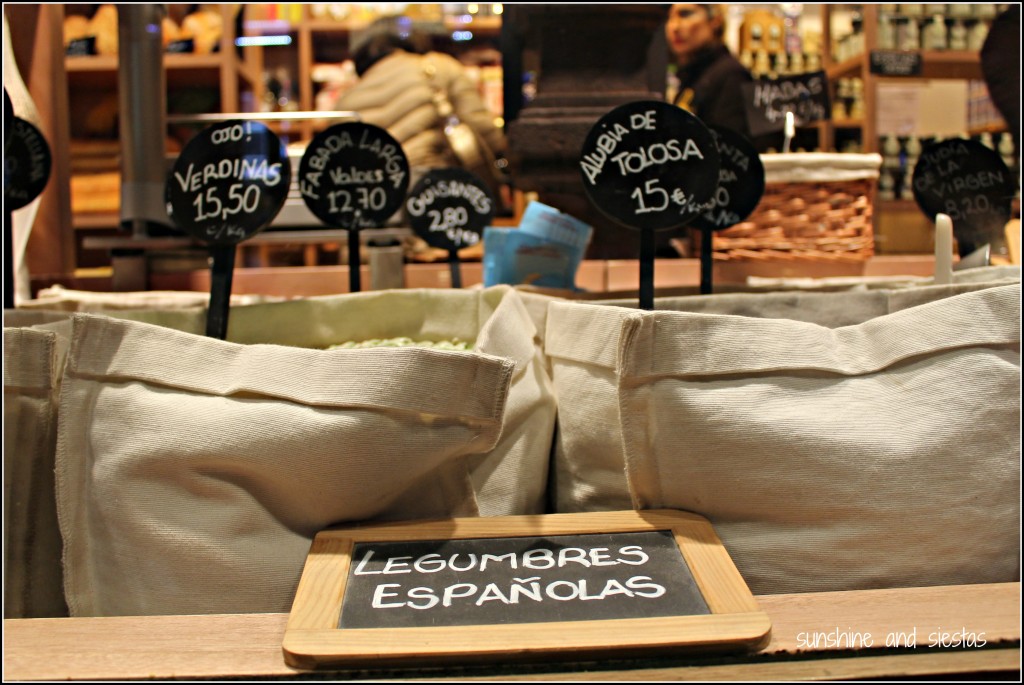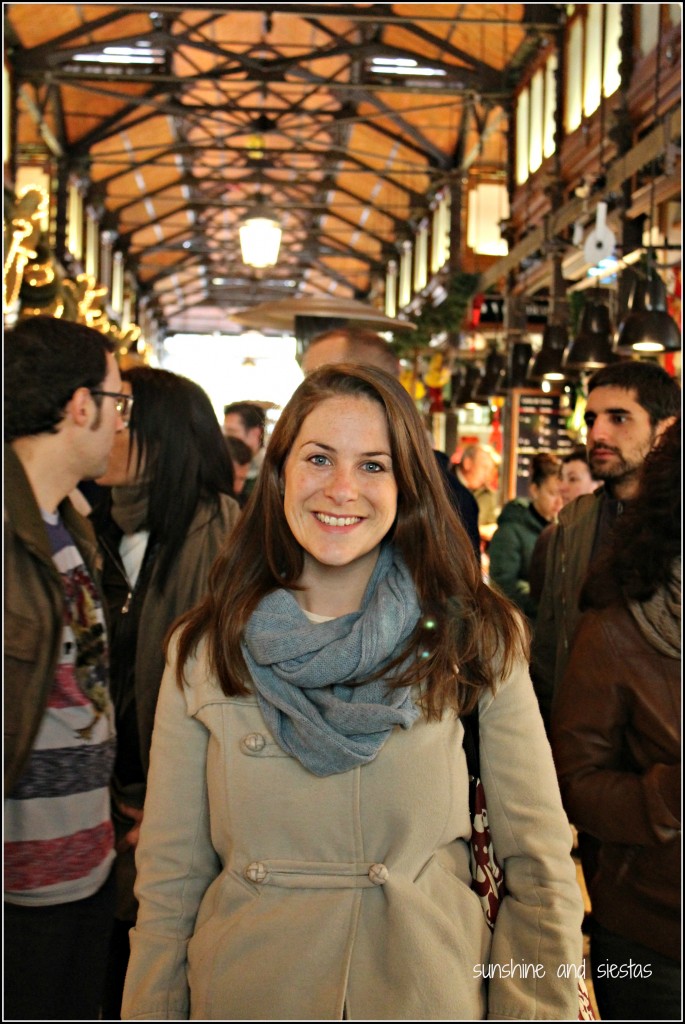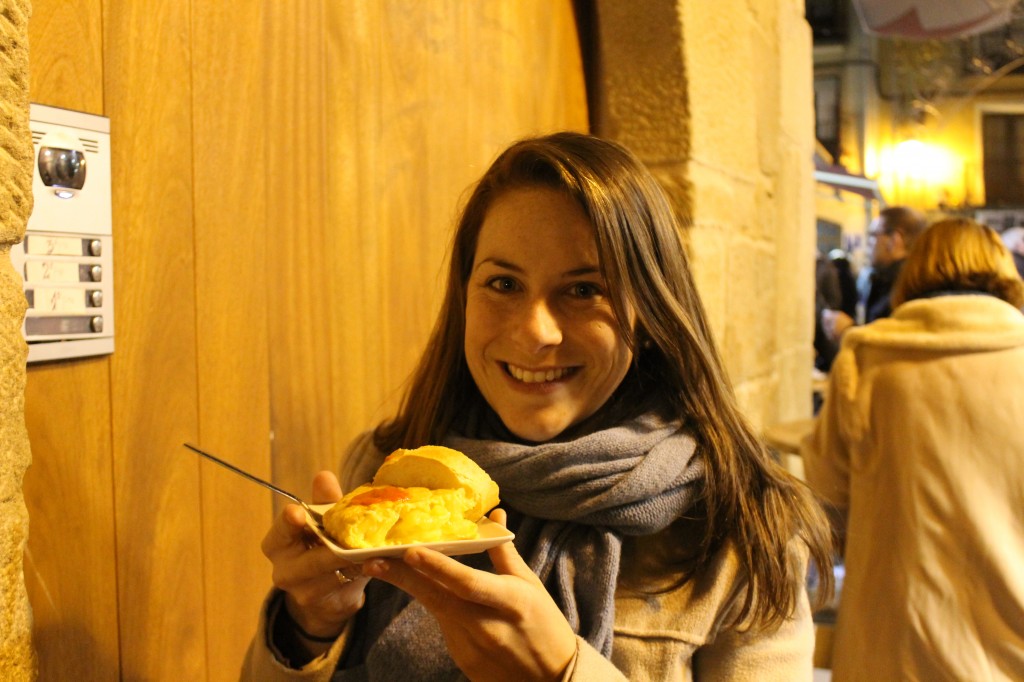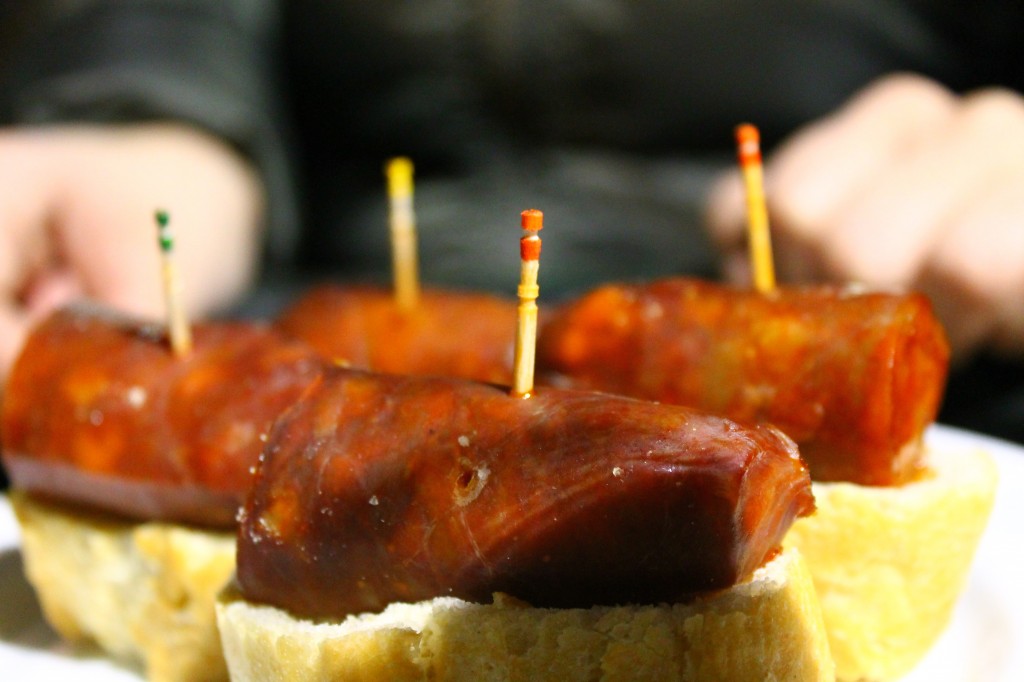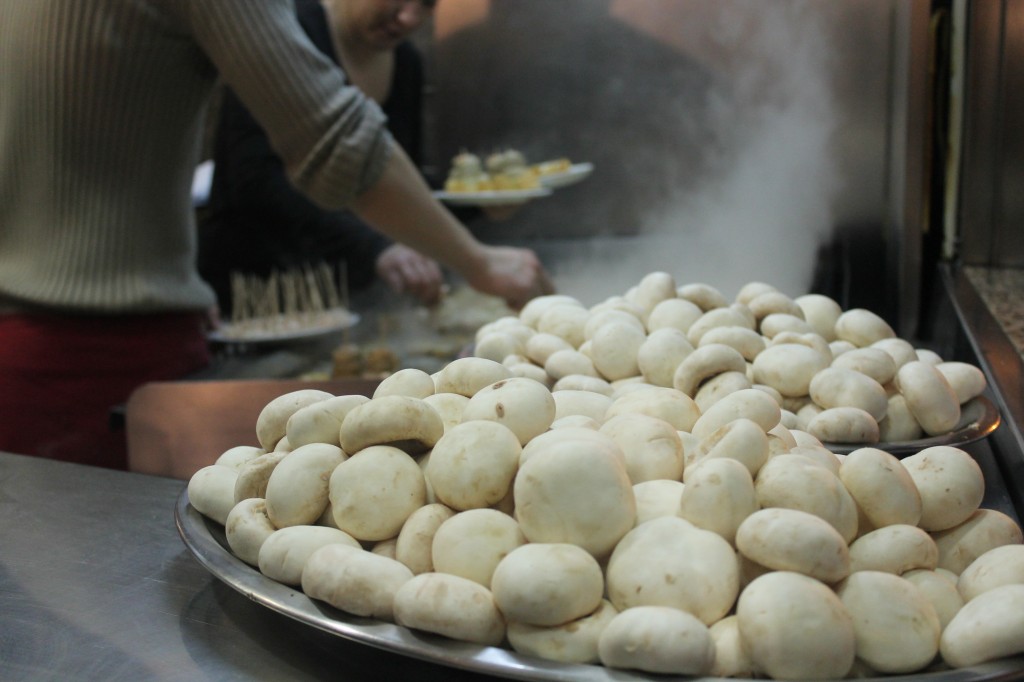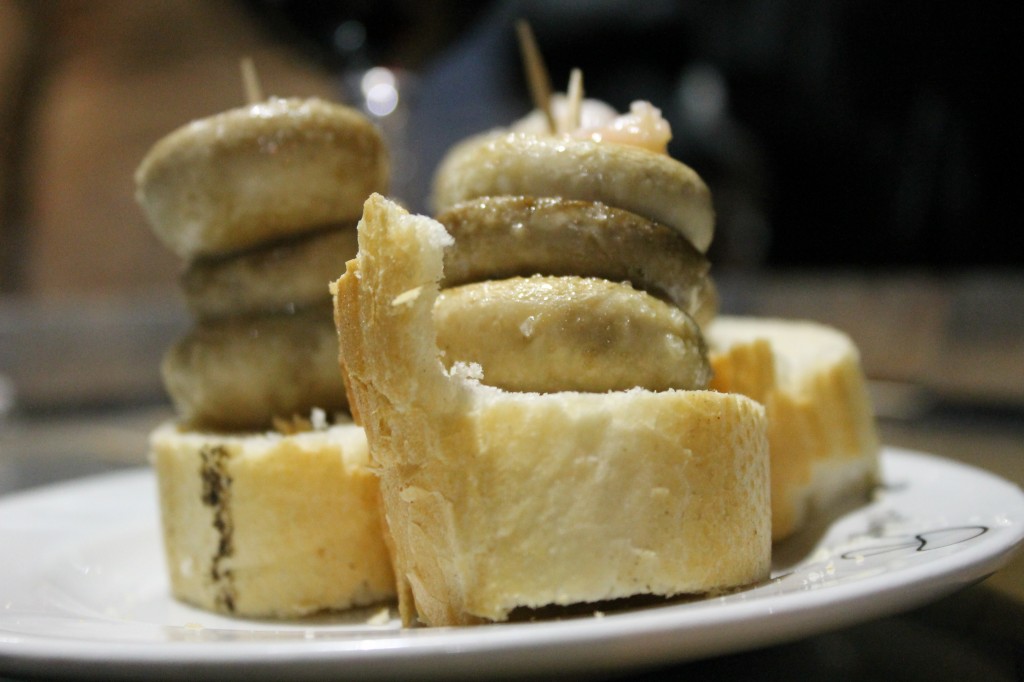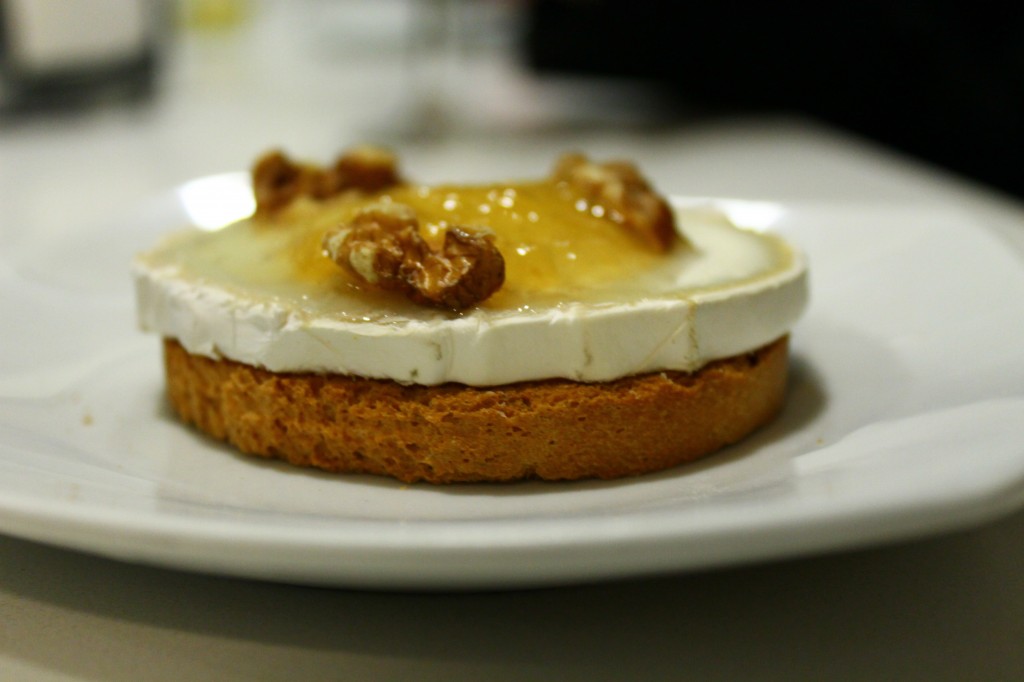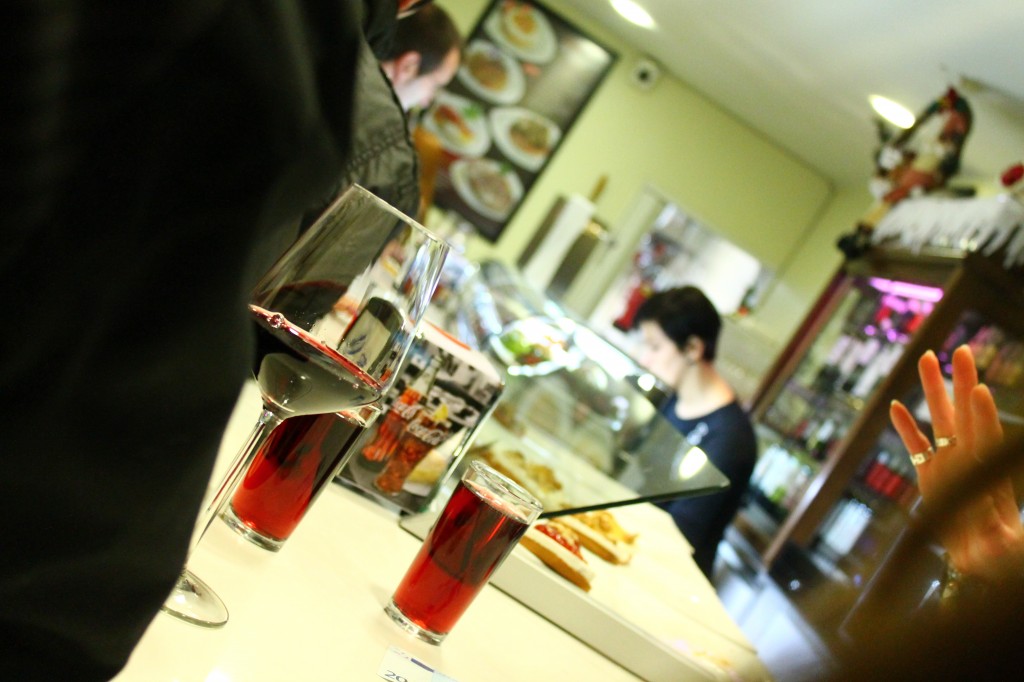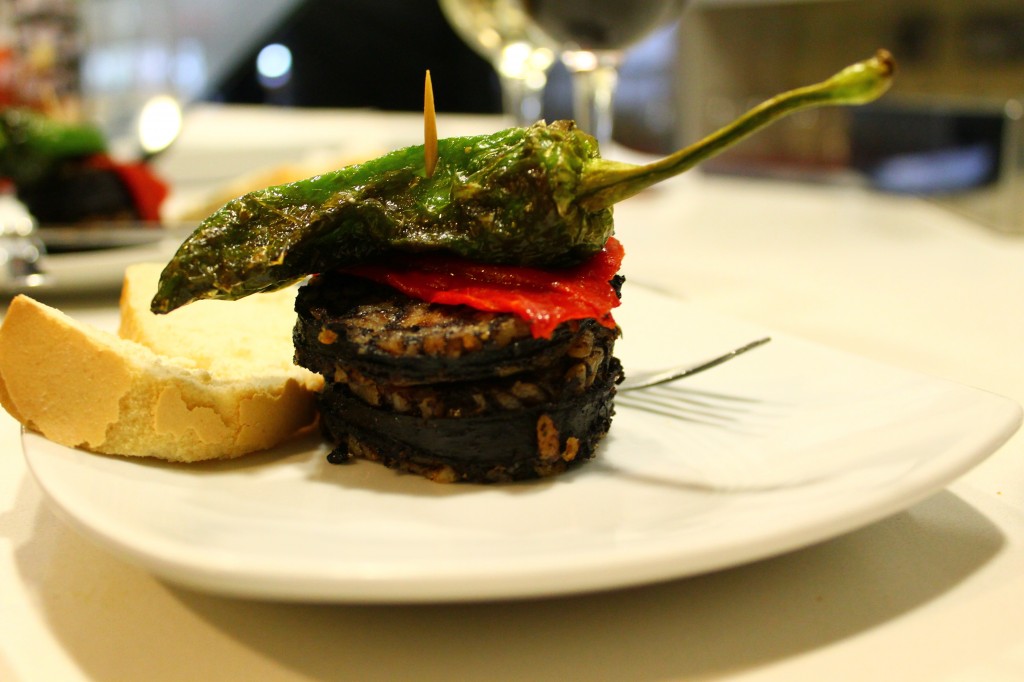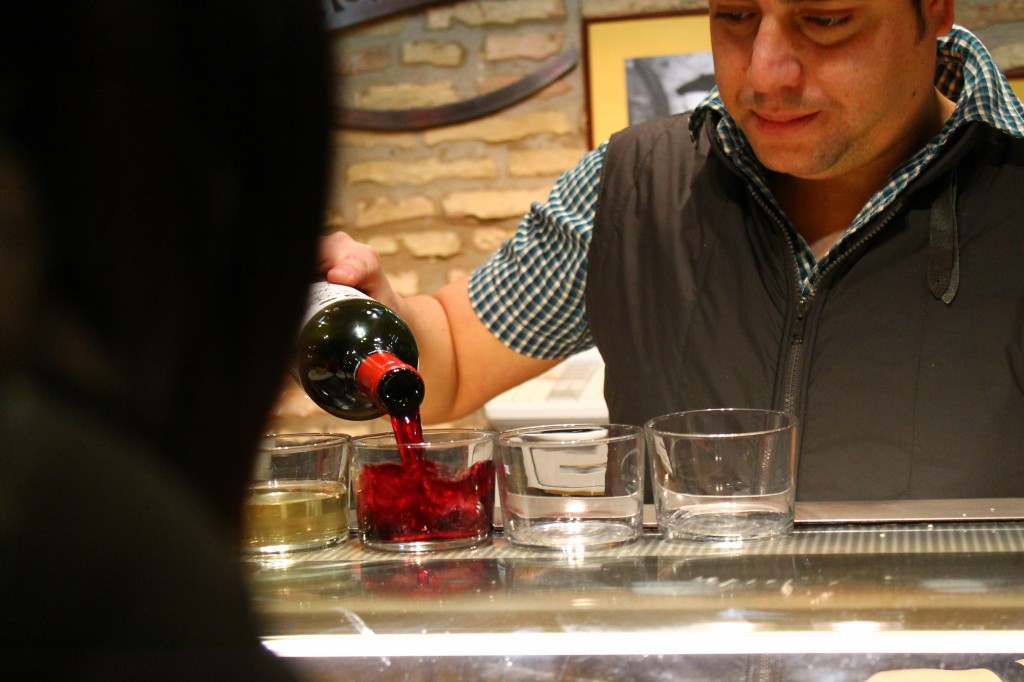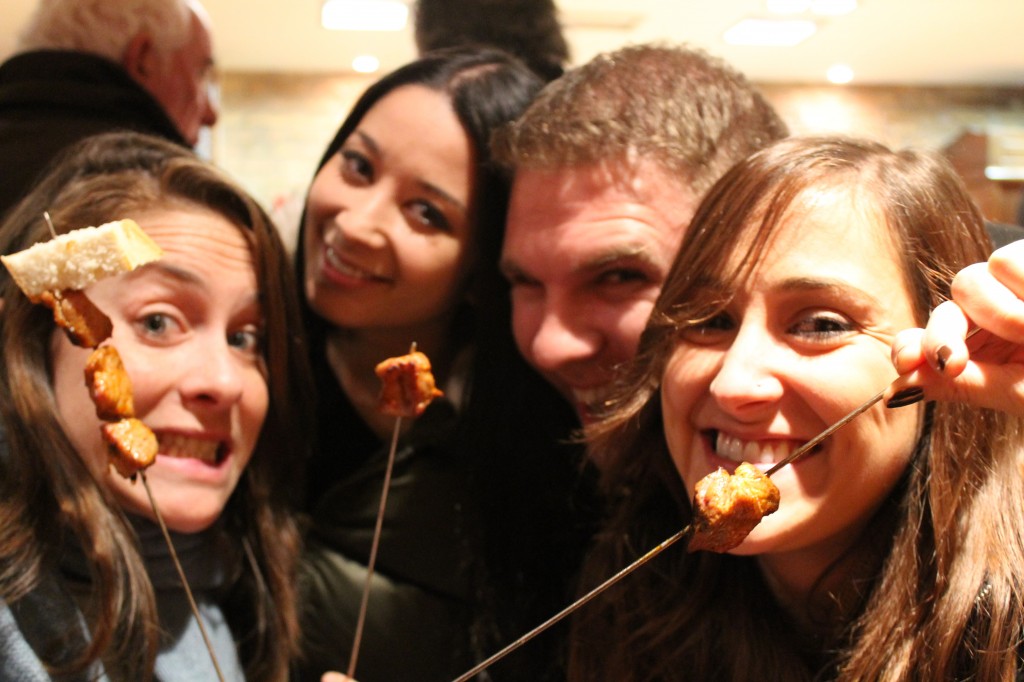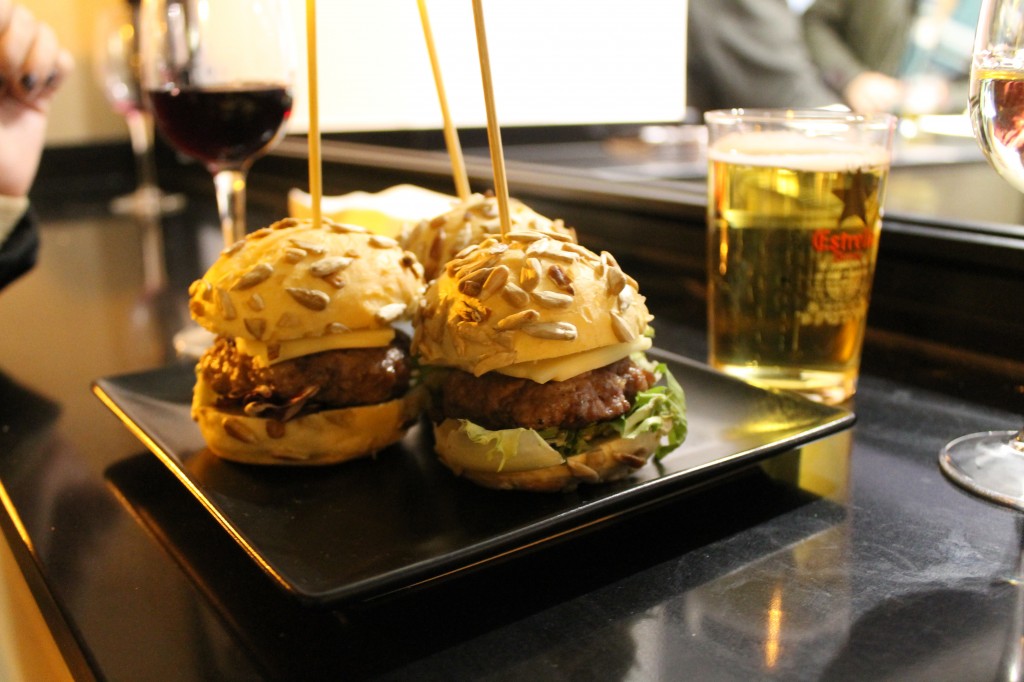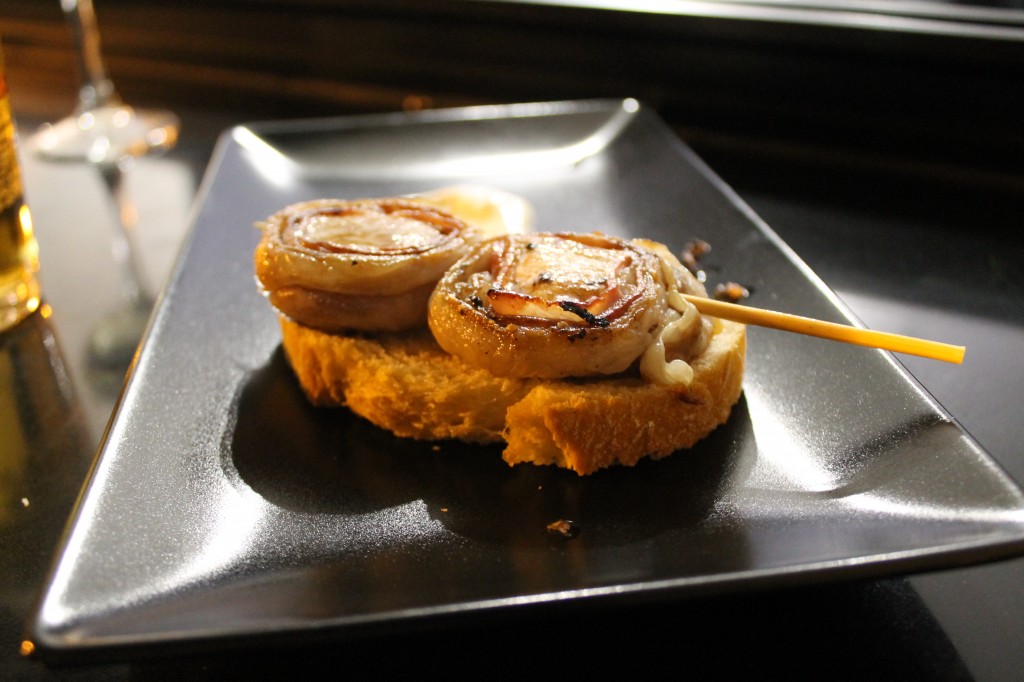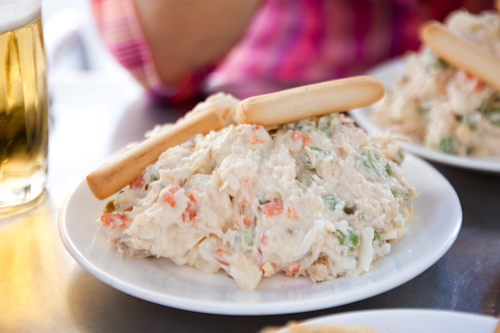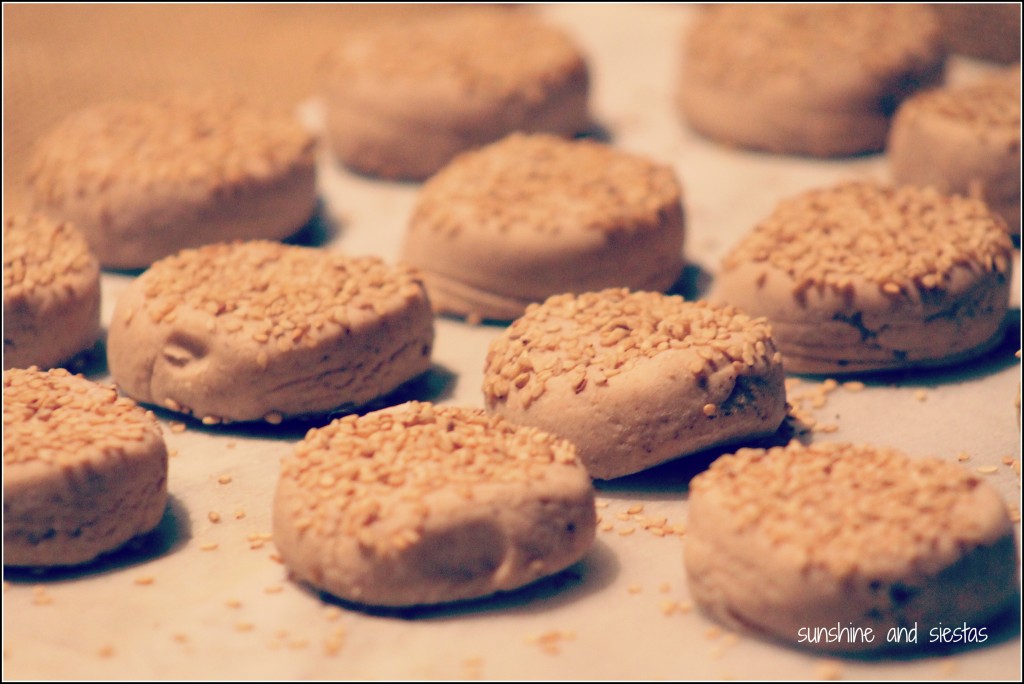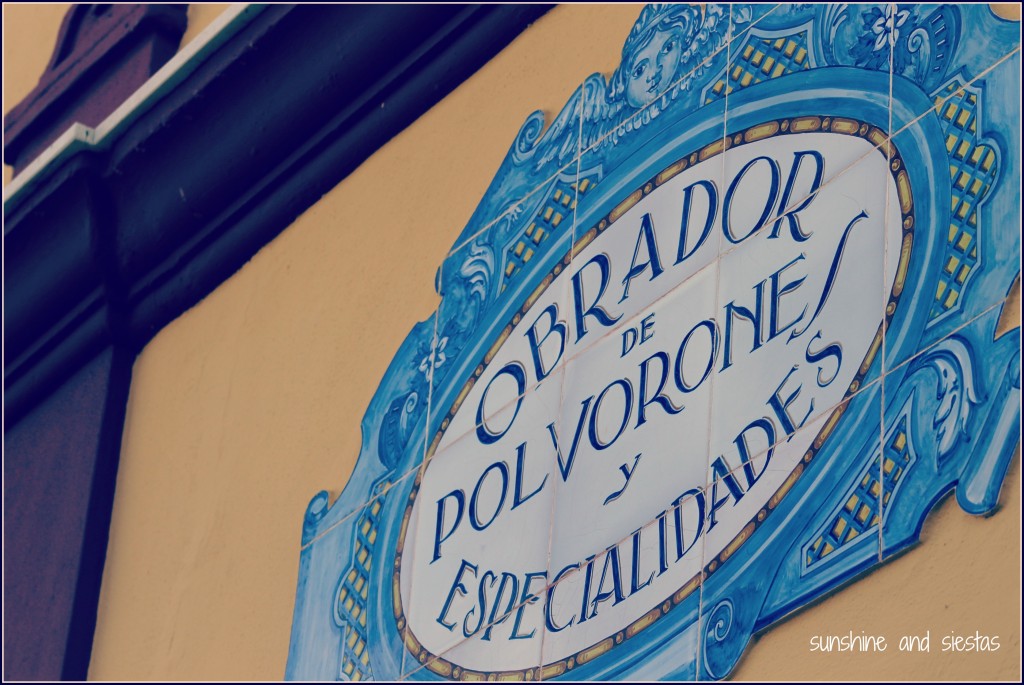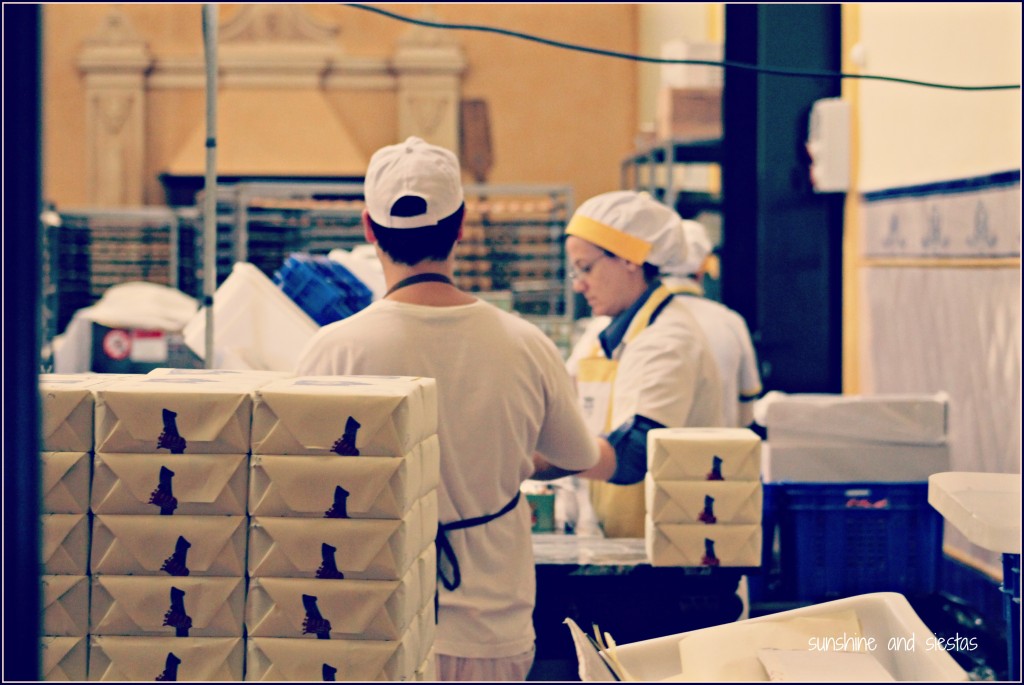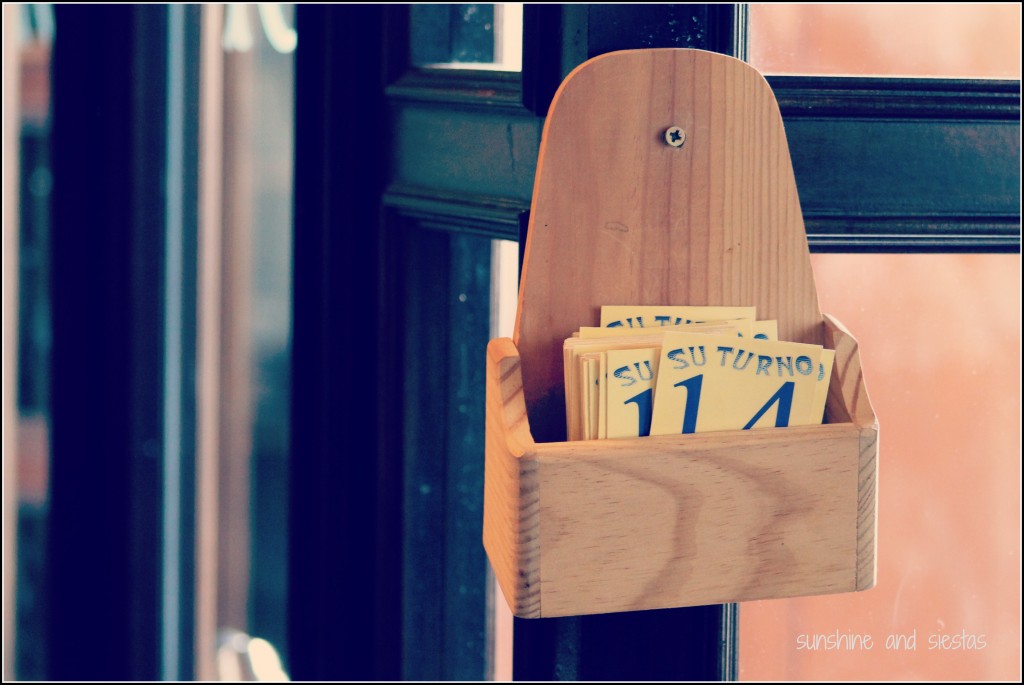“You not liking a hamburger would tell me you’re more Spanish than American,” Samu says as he served us a hamburger, his style, at Taberna la Tata. The mini ox burger has carmelized onions and beets, as well as a healthy dollop of cream cheese, served with buttered carrots. I died. Twice. Turns out I am a hardcore guiri.
In fact, hamburguesa was one of the first words I ever learned in Spanish, so it’s no surprise that the all-beef patties, special sauce (usually mustard)…ended up on menus in Spain.
And I don’t have any qualms ordering it.
What it is: Some type of beef patty, whether from a cow, bull or ox, and usually served in miniature.
Goes great with: It’s ok to say a big, cold Cruzcampo and a fútbol game, right? There are loads of variations on the plate, but the most common are typically carmelized onions and cheese.
Where to find it: Taberna la Tata have served me up two different “burger towers” – the one mentioned above and the one pictured above (I can only vouch for the one on Avion Cuatro Vientos, 105, though there’s another on Avenida la Buhaíra, 17). Another great joint is Bar Viriato right near the Setas, whose portions are oversized and the burgers perfectly seasoned (Calle Viriato, 7). And if you’re looking for a true American burger, you can always pay a ridiculous sum of money to chow down in a Spanish version of Americana at the Friday’s in Nervion Plaza.
Where are your favorite places for burgers in Seville?
Love tapas? Want to see a specific one featured Thursday? Leave me a comment, or post a picture of you eating your favorite tapas to my Facebook page!
